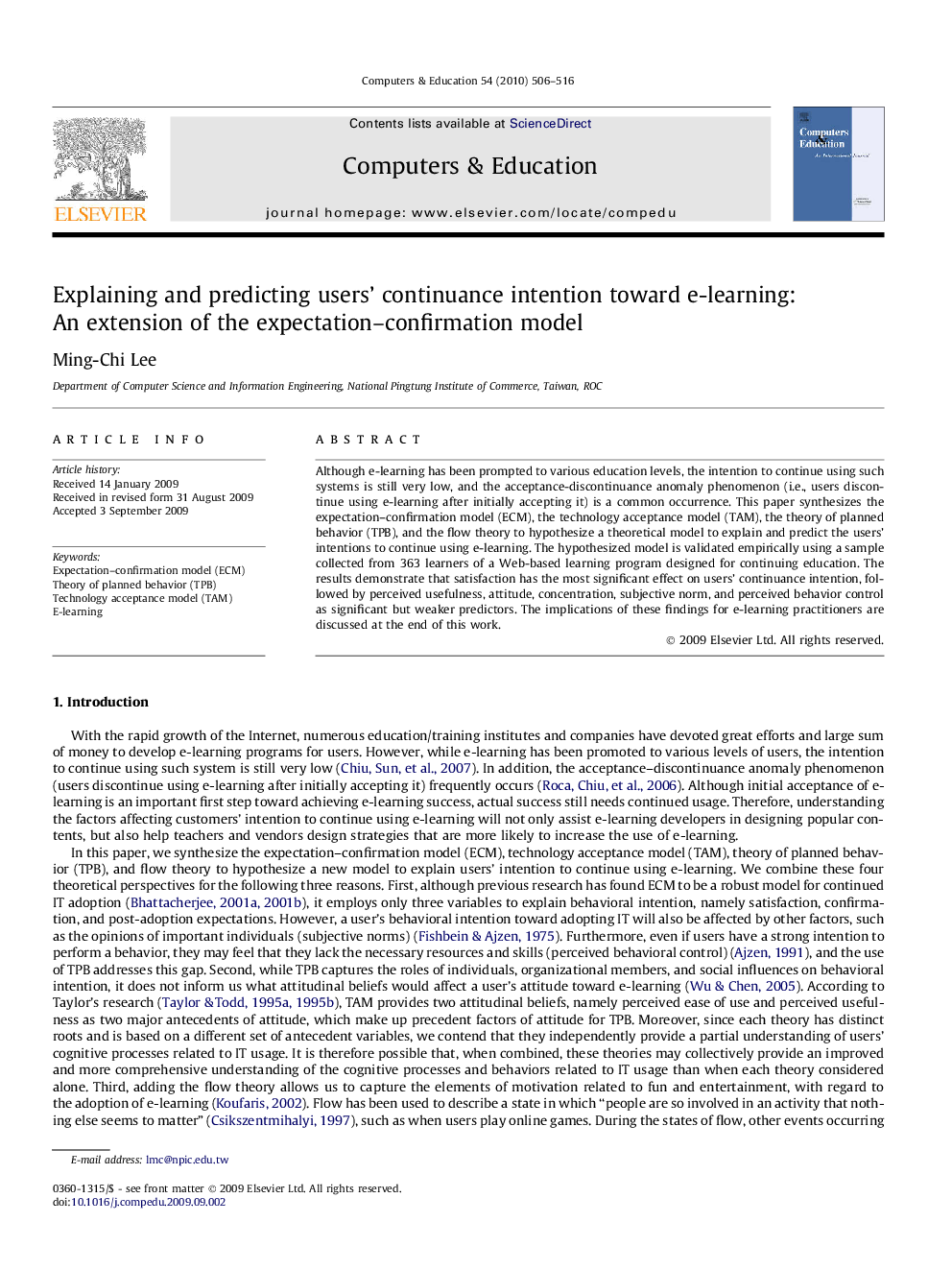| Article ID | Journal | Published Year | Pages | File Type |
|---|---|---|---|---|
| 349473 | Computers & Education | 2010 | 11 Pages |
Although e-learning has been prompted to various education levels, the intention to continue using such systems is still very low, and the acceptance-discontinuance anomaly phenomenon (i.e., users discontinue using e-learning after initially accepting it) is a common occurrence. This paper synthesizes the expectation–confirmation model (ECM), the technology acceptance model (TAM), the theory of planned behavior (TPB), and the flow theory to hypothesize a theoretical model to explain and predict the users’ intentions to continue using e-learning. The hypothesized model is validated empirically using a sample collected from 363 learners of a Web-based learning program designed for continuing education. The results demonstrate that satisfaction has the most significant effect on users’ continuance intention, followed by perceived usefulness, attitude, concentration, subjective norm, and perceived behavior control as significant but weaker predictors. The implications of these findings for e-learning practitioners are discussed at the end of this work.
